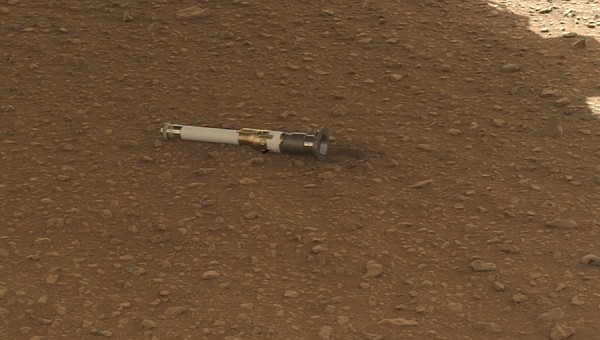NASA's Perseverance rover has been actively gathering precious material since it touched down on the Red Planet in 2021. Recently, the machine deposited a sample tube in what the agency calls the "first sample depot on another planet." Some of these samples in the depot might be picked up by another spacecraft and returned to Earth for in-depth analysis.
Perseverance has already started building the first sample depot, which is expected to host a total of 10 tubes filled with valuable material taken from the Jezero Crater. This marks a crucial step in the complex NASA-ESA Mars Sample Return (MSR) campaign, which aims to return chunks of the Red Planet back to Earth by the end of the decade.
The mission will involve multiple spacecraft that will work together to collect and safely transport the samples back home. Perseverance is one of the main actors in the MRS. Its job will be to transport samples to the Mars launch vehicle and also deposit them in a depot. Over the next few months, the rover will be busy building the depot in a rock-free region nicknamed the "Three Forks."
So far, Perseverance has collected two samples from each of its rock targets. Half of each pair will be kept in the rover's belly, while the other half will be dropped off at Three Forks as a backup set. The rover currently has a collection of 17 samples.
Those tubes that remain inside the Perseverance's belly will be delivered to a lander. In turn, the lander would use a robotic arm to put them in a capsule and load them into a small rocket. That rocket will carry the capsule to Mars orbit, where another spacecraft will retrieve it and safely transport it to Earth.
If Perseverance fails to deliver its samples to the lander, the depot will function as a backup. In that case, small helicopters would be sent to take over the rover's job. The MSR is a challenging mission, which is why NASA and ESA have already put their plans into motion. On December 21st, the rover dropped the first titanium tube, which holds a little fragment of igneous rock that was obtained earlier in the year.
Dropping it off, the Three Forks took almost an hour. That's because Perseverance had to use its Sampling and Caching System to take it out from its belly, inspect it with the onboard Sample Caching System Camera (CacheCam), and then place it on a designated patch of Martian soil.
Once the rover safely dropped the sample, scientists also had to make sure that the tube didn't accidentally get in the way of the rover and that it didn't stand on its end. So they used the machine's WATSON camera to check if everything is the right place. In the following weeks, another nine tubes are expected to follow the same process.
The mission will involve multiple spacecraft that will work together to collect and safely transport the samples back home. Perseverance is one of the main actors in the MRS. Its job will be to transport samples to the Mars launch vehicle and also deposit them in a depot. Over the next few months, the rover will be busy building the depot in a rock-free region nicknamed the "Three Forks."
So far, Perseverance has collected two samples from each of its rock targets. Half of each pair will be kept in the rover's belly, while the other half will be dropped off at Three Forks as a backup set. The rover currently has a collection of 17 samples.
Those tubes that remain inside the Perseverance's belly will be delivered to a lander. In turn, the lander would use a robotic arm to put them in a capsule and load them into a small rocket. That rocket will carry the capsule to Mars orbit, where another spacecraft will retrieve it and safely transport it to Earth.
If Perseverance fails to deliver its samples to the lander, the depot will function as a backup. In that case, small helicopters would be sent to take over the rover's job. The MSR is a challenging mission, which is why NASA and ESA have already put their plans into motion. On December 21st, the rover dropped the first titanium tube, which holds a little fragment of igneous rock that was obtained earlier in the year.
Dropping it off, the Three Forks took almost an hour. That's because Perseverance had to use its Sampling and Caching System to take it out from its belly, inspect it with the onboard Sample Caching System Camera (CacheCam), and then place it on a designated patch of Martian soil.
Once the rover safely dropped the sample, scientists also had to make sure that the tube didn't accidentally get in the way of the rover and that it didn't stand on its end. So they used the machine's WATSON camera to check if everything is the right place. In the following weeks, another nine tubes are expected to follow the same process.










